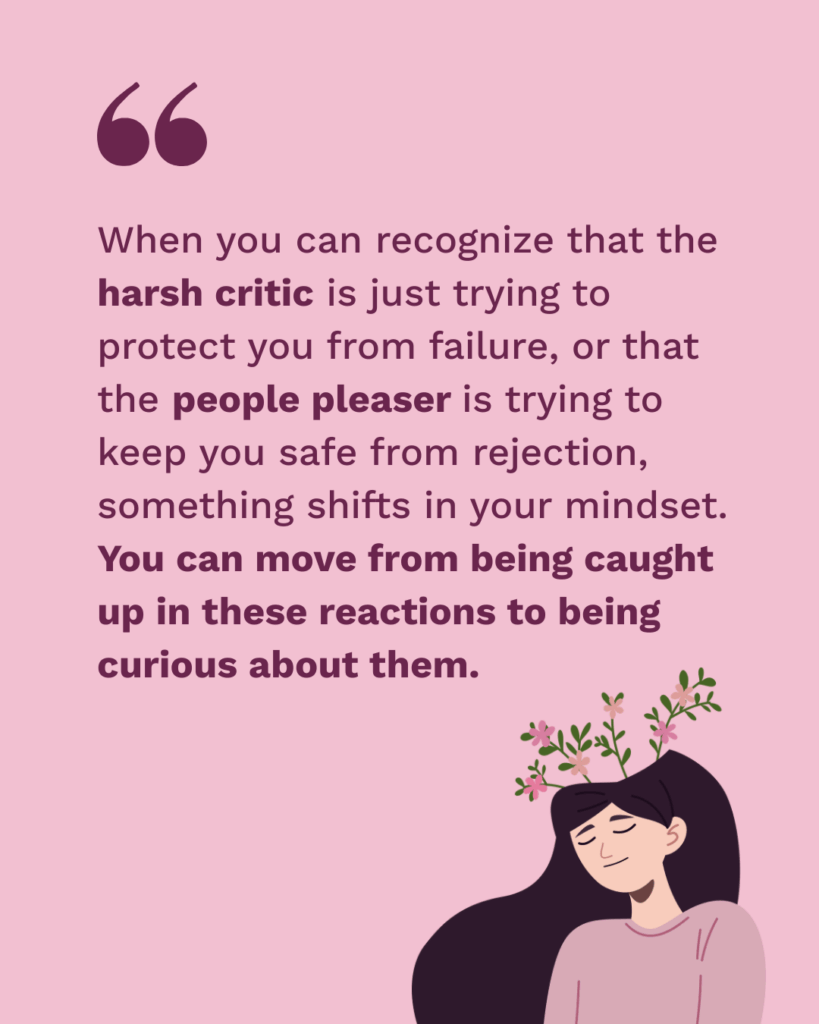You’re Basically Inside Out: How Pixar Accidentally Explained a Therapy Model
By Christine Rossi-Wright, BEd, MSW, RSW (Ont.)
Have you seen Pixar’s Inside Out? If you haven’t, you need to. It’s brilliant! The film takes us inside eleven-year-old Riley’s mind, where her emotions – Joy, Sadness, Fear, Anger, and Disgust – are all literal characters. Each one has their own personality and sits at a control panel, taking turns steering Riley’s reactions and decisions throughout her day.
What if I told you that this brilliant storytelling actually mirrors a therapeutic approach that can help you navigate creative blocks and industry challenges? It’s called Internal Family Systems (IFS), and before you roll your eyes and think “Here we go with the woo-woo stuff” or dismiss this as another self-help trend, hear me out. I know there’s a part of you that’s curious about what I’m talking about.

Meet Your Internal Cast of Characters
IFS recognizes that we’re like an ensemble cast – different “parts” of ourselves that developed over time to help us survive and thrive. I know it sounds a bit abstract at first, but stay with me.
Here’s a Quick Exercise to Try
Think about a recent challenge you experienced. Now, notice the different reactions or voices that showed up inside and jot them down on a piece of paper. Maybe it’s the harsh critic or the panicked “I’ll never work again” voice. Perhaps you hear an angry part wanting to quit and give up, or a quieter voice telling you, “Maybe I’m just not cut out for this.”
The Three Types of Players
In IFS, these internal parts generally fall into three categories:
Managers work hard to keep us feeling safe and in control. They may show up as the perfectionist, the people-pleaser, or the part that pushes us to network and hustle constantly.
Firefighters step in when emotions become too intense. They might lead us to seek relief through substances, sudden decisions, explosive anger, or even stepping away from a project when things feel like too much.
Exiles are the vulnerable parts of us that hold our deepest hurts – the feelings we’ve learned to tuck away because they feel too raw or overwhelming to experience fully.
Practice This
Look at your list from the first exercise and see if you can identify which category each of your reactions or voices falls into. The harsh critic is likely a Manager. The panicked part could be a Manager or Firefighter. The angry part is likely a Firefighter, and the “Maybe I’m just not cut out for this” is an Exile.
Key Insight
Here’s the key insight: You are not the sum of these parts. Just like Riley in Inside Out is a whole person beyond her emotions, you exist beyond your internal reactions. In IFS, this centred aspect of you is called Self. It’s the part that can observe and work with all your other parts.
Here’s where IFS gets interesting: You might not feel like you can step back from your reactions, but you actually do this more than you realize. Think about when you’re listening to a colleague who’s upset about something – you can see what’s happening without getting swept up in it. Or supporting a friend who’s feeling stressed about their career – you’re not panicking along with them; you’re present and calm. That observing part of you that can witness without judgment? That’s Self. You already have it. You just don’t usually turn it toward your own internal reactions.
Imagine if you could offer yourself that same steady presence you give others when they’re struggling.
Starting to Notice
So, what do you do with all this? For now, nothing dramatic. Just start noticing. When you catch yourself thinking, “I’m not good enough” or “I can’t let anyone see this until it’s flawless,” you can simply think, “Oh, there’s that part again.”
There’s no need to fix or change it. Just notice it with the same compassion you’d offer a friend.
The beautiful thing about IFS is that it isn’t trying to eliminate these parts. These parts developed for very good reasons and have been trying to help you survive in an extremely tough industry. Instead, it’s about creating a different relationship with them. When you can recognize that the harsh critic is just trying to protect you from failure, or that the people pleaser is trying to keep you safe from rejection, something shifts in your mindset. You can move from being caught up in these reactions to being curious about them.
This is just the beginning of understanding how your internal system works. Like any good creative team, the magic happens when everyone can contribute without taking over the whole project. And you – your Self – get to be the one who helps coordinate it all.